The next-gen MacBook Pro with Retina Display Review
by Anand Lal Shimpi on June 23, 2012 4:14 AM EST- Posted in
- Mac
- Apple
- MacBook Pro
- Laptops
- Notebooks
The King of All Notebook Displays
For years Apple has been shipping some of the best displays in consumer notebooks, but the MacBook Pro’s Retina Display is in a league of its own. While I never liked the phrase “painted on” in reference to the iPad and iPhone Retina Displays, that’s the best way I can describe the effect the MacBook Pro’s Retina Display has on me. Text really does look painted on. The effect is really the result of two things.
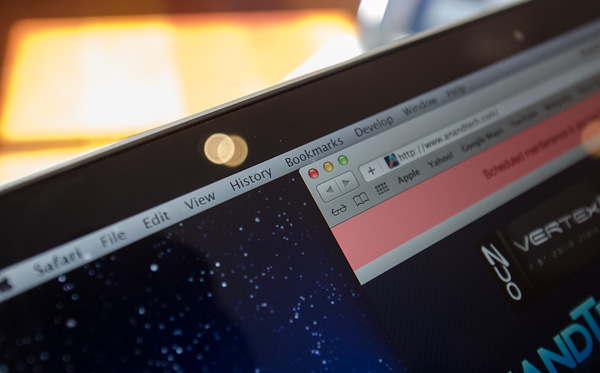
The first is Apple’s removal of its cover glass. LCD panels aren’t particularly attractive, they are ugly squares composed of two pieces of glass and a number of filters/polarizers. To hide the ugly edges, display makers wrap bezels around the display. Most people aren’t fond of bezels so next came a ton of effort to minimize bezel size. An alternative is to simply place a third piece of glass over the entire LCD assembly and make it look as if the bezel and LCD panel are integrated. This outermost layer is known as a cover glass and is what Apple uses on all of its glossy displays. If you’ve ever taken apart a Cinema/Thunderbolt Display or a newer iMac you’ll know that the cover glass is literally just a piece of glass that you have to remove with some suction cups.
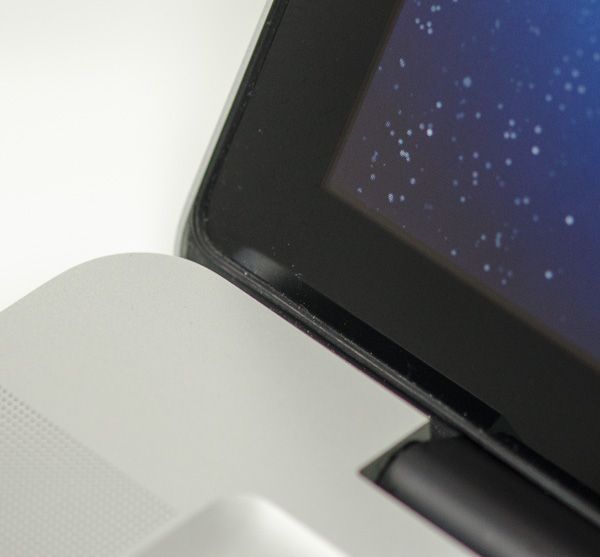
Non-Retina MacBook Pro, notice the gap between the outermost LCD glass and the cover glass
The MacBook Pro’s Retina Display does away with the cover glass and instead uses a fairly unique LCD assembly. There are still two pieces of glass but the outermost glass is actually a different size and shape - it integrates a bezel. By integrating the bezel into the outermost glass in the LCD stack you get the same effect as a cover glass but without the added reflections it introduces.
You also limit the possibility of dust getting trapped between the cover glass and the LCD. The danger is that you no longer have a protective piece of glass in front of your expensive new LCD. If you scratch the display you're scratching the LCD itself. While this has been true for conventional matte displays for a while, it's worth mentioning if you're used to Apple's glossy displays where you did have that added security layer.
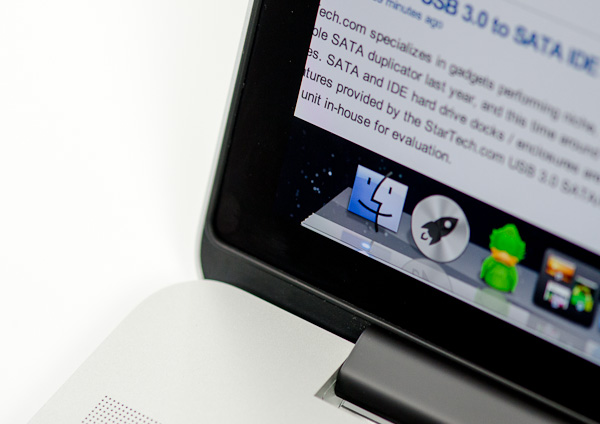
The MacBook Pro with Retina Display, no gap, no cover glass
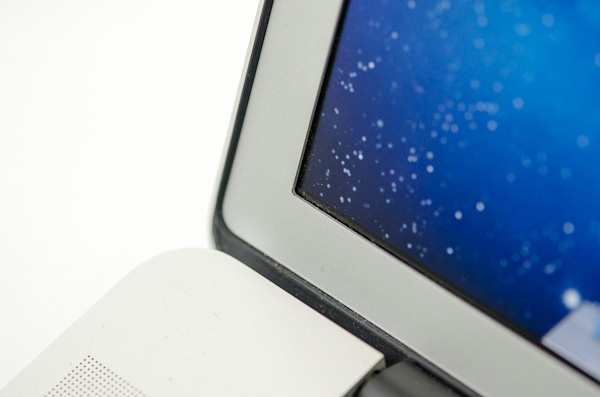
The 2011 MacBook Pro with High-Res Matte display option, no cover glass, top bezel

From left to right: 2010 High Res Glossy MBP, 2012 rMBP, 2011 High Res Matte MBP
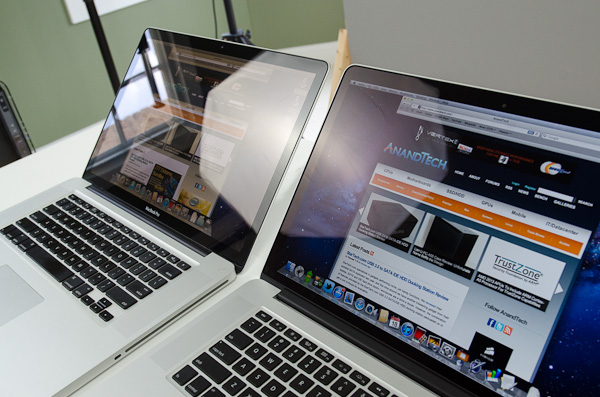
Glare handling indoors - 2011 High Res, Glossy MBP (left) vs 2012 rMBP (right)
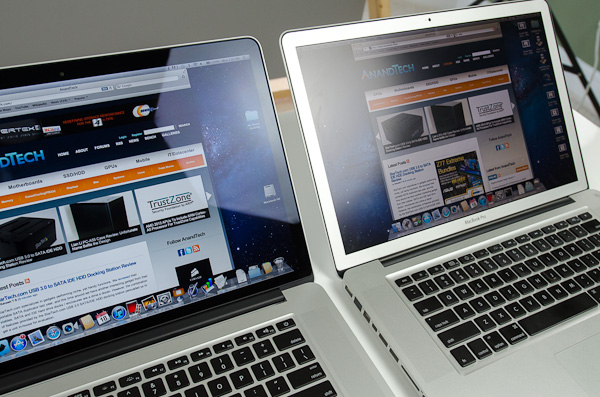
Glare handling indoors - 2012 rMBP (left) vs. 2011 High Res, Matte MBP (right)
The Retina Display is also obviously an extremely high resolution panel at 2880 x 1800. Note that this is 44.6% more pixels than Apple’s 27-inch Thunderbolt Display, and 26.6% more pixels than the 30-inch panels that we’ve loved for so long - all in a 15.4-inch notebook display.
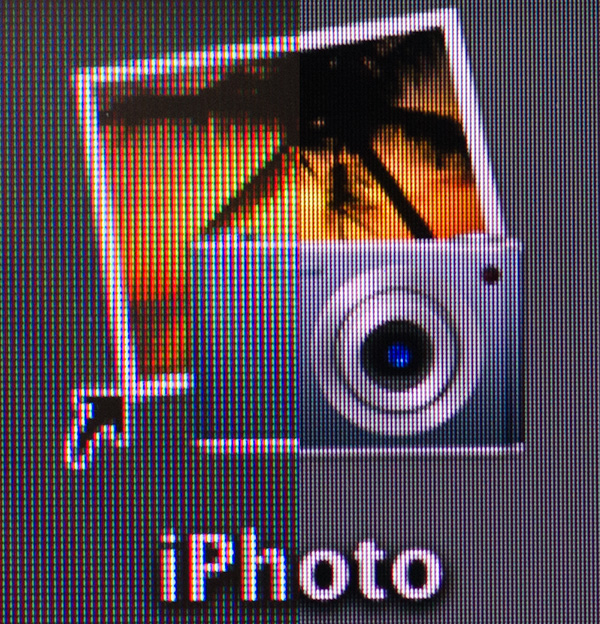
An iPhoto shortcut, High Res 2011 MBP (left) vs. Retina Display MBP (right)
At 220 pixels per inch it’s easily the highest density consumer notebook panel shipping today. At normal viewing distances and even with my face closer than I’m comfortable putting it I simply cannot discern individual pixels.
It’s the combination of these two elements, the removal of the cover glass and the insanely high pixel density that makes everything from text to UI elements just look painted on the new Retina Display. And the effect is gorgeous. I’ve never seen a prettier panel and it’s actually ruined me for pretty much all other displays, notebook and desktop.
While I can appreciate the iPad’s Retina Display, the impact from the MacBook Pro’s display is even more significant. Perhaps it’s because I still spend so much time working on a standard, non-tablet display, but I’m far more excited about this display than anything else Apple has delivered under the Retina moniker.
It’s not just pixel density that Apple has to offer here. Similar to its Retina Displays in the iPhone and iPad, the MacBook Pro’s Retina panel ditches TN in favor of IPS technology. The result is an incredible improvement in viewing angles. On a notebook I don’t spend a lot of time viewing it from far left/right angles, although I see the benefit when I’ve got others huddled around my display. Here the panel performs admirably - you lose brightness at far left/right angles but there’s no perceivable color shift. In fact, the painted on effect is even more impressive at these far left/right viewing angles.
For a single user however the more impressive characteristic is just how good the display looks at vertically off-center angles. I wrote much of the initial parts of this review while on an airplane in coach, which with a 15-inch notebook on my lap means I’m going to be looking at the display at a weird angle to begin with. The thinner rMBP doesn’t do enough to make the airplane usage model any better if the person in front of you decides to recline, but the IPS panel does make the display perfectly usable at the off-center angle you’ll inevitably have to deal with.
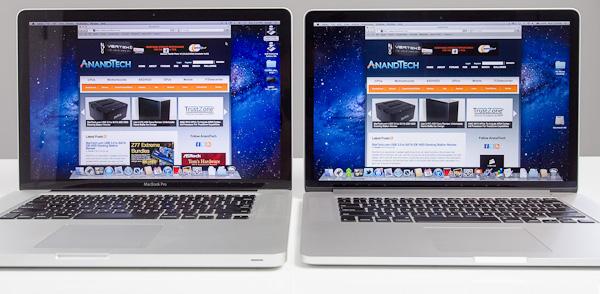
2010 High Res, Glossy MBP (left) vs. 2012 rMBP (right)
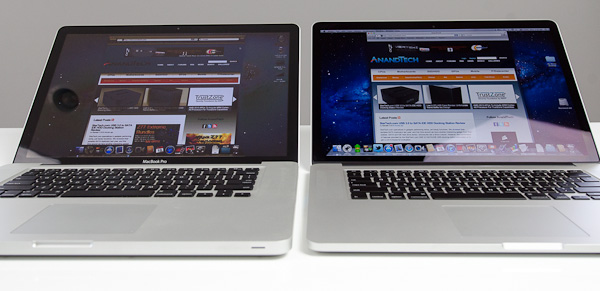
Hello colorshift!
2010 High Res, Glossy MBP (left) vs. 2012 rMBP (right)


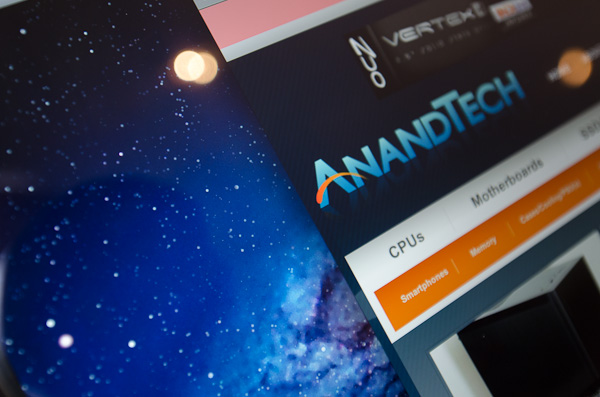
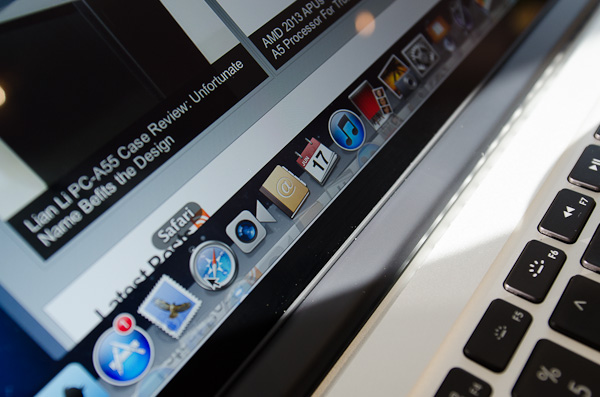
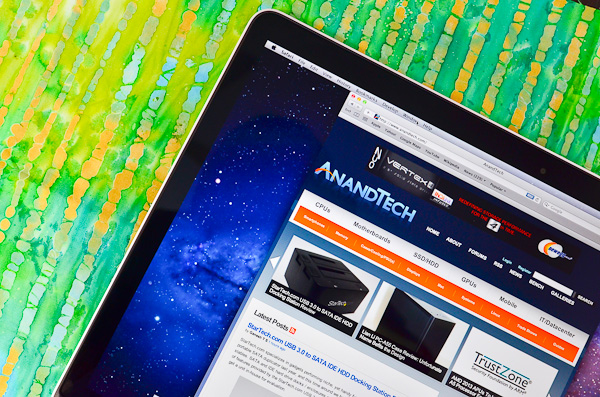
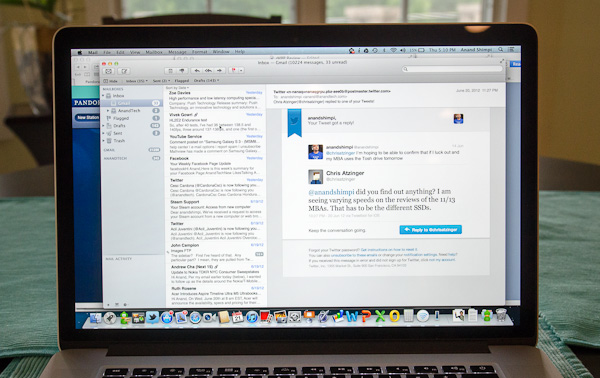
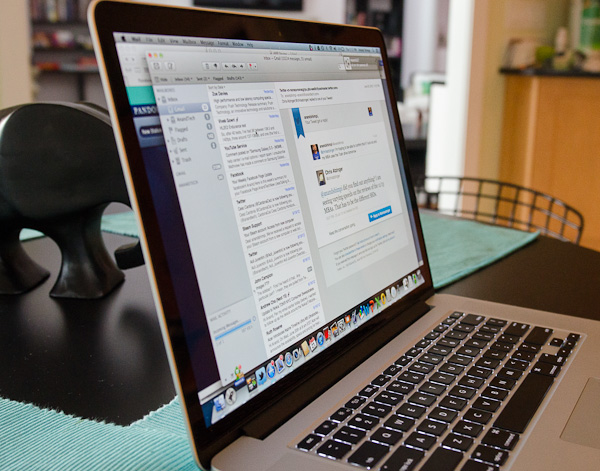








471 Comments
View All Comments
Sunburn74 - Saturday, June 23, 2012 - link
Didn't Anand often say "there are no bad machines, only bad prices"? Don't you have to consider the asking price when a machine is being looked at and how the competition matches up before anointing it the end all of all creations?solipsism - Saturday, June 23, 2012 - link
Aren't the current 15" notebooks with IPS displays and the same size SSDs — but with worse build quality, worse performance, and vastly inferior displays — currently higher priced?An HP EliteBook 8560w — 15.6", IPS display, Intel® Core i7-2670QM (2.20 GHz, 6 MB L3 cache), 8GB RAM — starts at $2189 (with the instant discount) and despite all the other inferior HW comapred to the new MBP only comes with a 500GB 7200 rpm SATA II. SATAII, really?!
So what am I missing that you think Apple's RMBP is overpriced for it's particular category and market segment?
DeciusStrabo - Saturday, June 23, 2012 - link
They are arguably not worse build quality, but better, having shock-protected internals, more interfaces, a option to use a dock, higher level service agreements etc. They are for a different user group (businesses) able to pay higher prices for more (perceived) reliability and flexibility.ananduser - Saturday, June 23, 2012 - link
Your specified model is 1550$. You're wrong.http://h10010.www1.hp.com/wwpc/us/en/sm/WF06b/3219...
solipsism - Saturday, June 23, 2012 - link
No, I clearly specified this model: http://h10010.www1.hp.com/wwpc/us/en/sm/WF06b/3219...ananduser - Sunday, June 24, 2012 - link
Yes...you are correct, but you failed to mention vPro tech(under Processor technology). A crucial feature in business use that does not come on any mac. It is the only difference in the base specs between my listed model and yours. I would say you cherry picked that one. If you choose 8560w and compare you should compare the non-Vpro model(mine).http://en.wikipedia.org/wiki/Intel_vPro A pretty nifty tech, crucial in some areas. Read a little on it and you'll see it's worth the money.
kmmatney - Sunday, June 24, 2012 - link
That model doesn't have an SSD (and I'm not sure about the video card as well).teng029 - Saturday, June 23, 2012 - link
Anand, as per usual, you don't disappoint with your product reviews. Thanks.anactoraaron - Saturday, June 23, 2012 - link
$2200 and they feel the need to nickel and dime me with accessories? No Gigabit - $30 adapter. $10 power adapter for 1st gen Magsafe.But Mac's are often the first to implement the latest and greatest - display's, thunderbolt, etc bringing it to the mainstream since most PC manufacturers want to stay on the low end and keep costs down.
DaveChapin77 - Saturday, June 23, 2012 - link
I think most folks getting this laptop will also have a 27inch thunderbolt display at home or at work. That sucker has all of the old legacy ports you need including the gigabit Ethernet -- not to mention FireWire and 3 USB ports. That monitor even has a power cable so you can leave your laptop one in your travel bag.